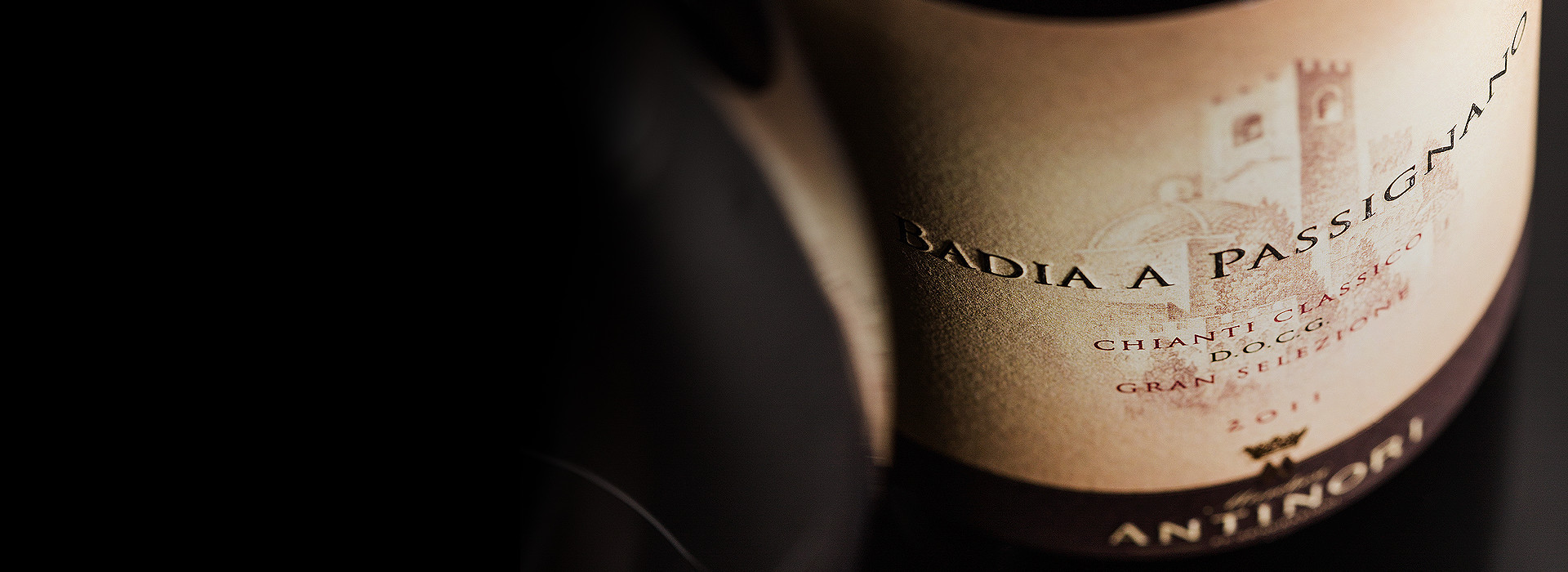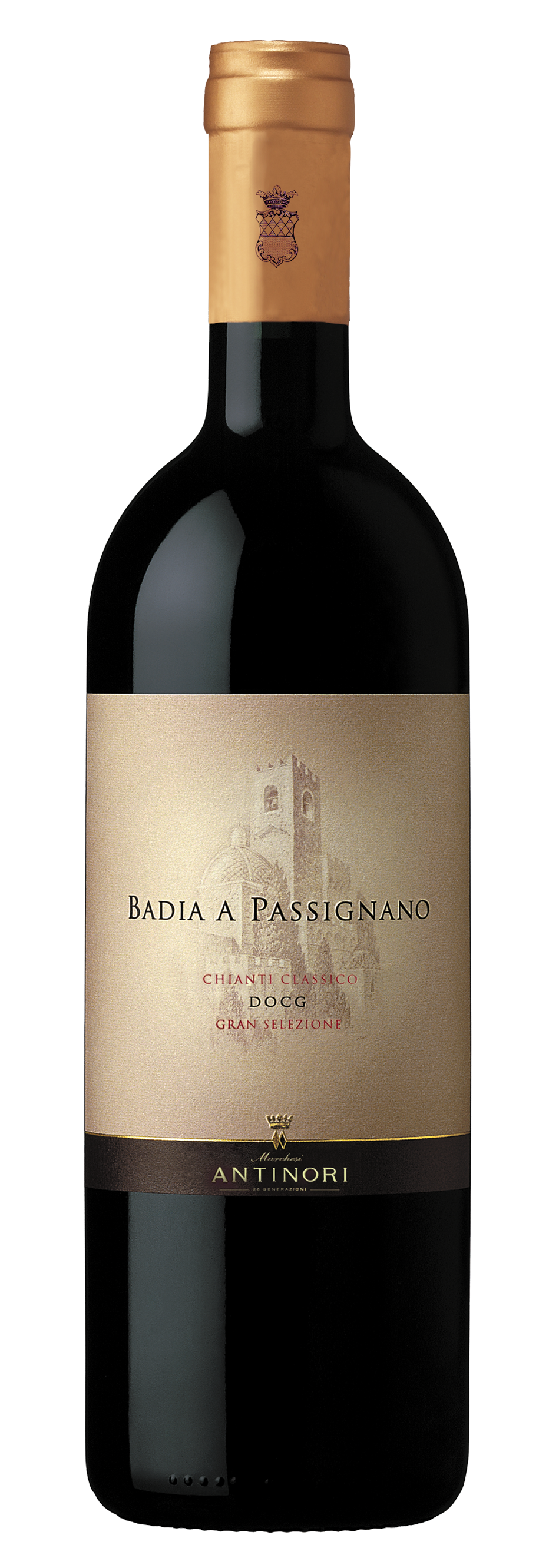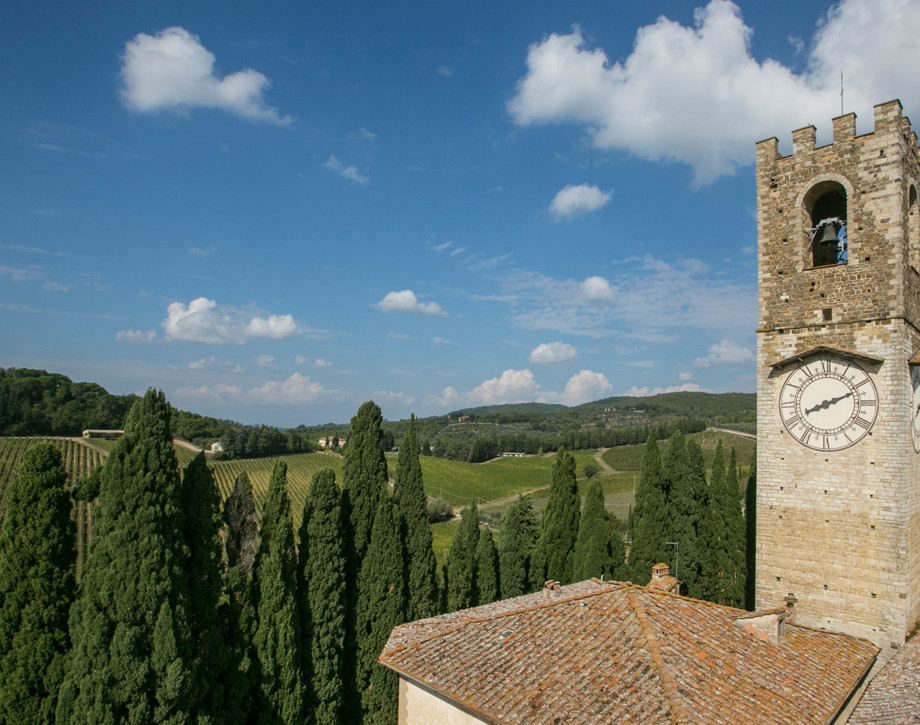Badia a Passignano

Climate
The 2018 growing season in Chianti Classico started with fairly normal winter weather both in terms of temperatures and precipitation. Despite these climatic conditions, the vines began bud break one week earlier than seasonal averages. Spring brought frequent rain showers and lower than average temperatures, especially during the month of May. June and July were dry and relatively hot, but without extreme weather events. Occasional rain showers in the month of August and dry, breezy conditions in September and October coaxed the grapes to optimal ripeness, with good sugar concentration levels and excellent phenolic maturity. Harvesting activities began the last week of September and were completed the first week of October.
Vinification
After destemming, the berries were carefully selected and gently crushed. Each vineyard parcel was kept as a separate lot throughout fermentation and aging. Alcoholic fermentation lasted for a period of 10 days and was followed by an additional period of 10-12 days of maceration on the skins. The wine was racked, still separated by vineyard of origin, and transferred to Hungarian oak barrels with a small percentage going into French oak barrels, where malolactic fermentation and aging took place for several months. During this phase, the different lots were tasted consistently to determine the maximum expression of oak aging, then blended once maturity was achieved. The wine was bottled on the estate and was left to age in the bottle before being released for sale.
Historical data
Badia a Passignano Gran Selezione is produced exclusively from the finest Sangiovese grapes harvested from its namesake vineyard located in the heart of the Chianti Classico region. The region has been respected and appreciated for its outstanding wine production since the year 1000. The vineyards grow at an altitude of approximately 300 meters (984 feet) above sea level on soils rich in limestone with a fair amount of clay. The wine is aged in the historic cellars under the Badia (abbey) of Passignano that dates back to the 10th century.
Tasting Notes
Badia a Passignano 2018 is ruby red in color. Its complex nose presents intense notes of ripe red fruit, especially sour and black cherries, that merge with sweet hints of blueberries and apricots. Its bouquet is completed by pleasant balsamic sensations of aromatic herbs and toasted aromas of chocolate, coffee, licorice and vanilla. On the palate it’s rich, mouth filling, succulent and flavorful yet well sustained by extraordinary freshness and mineral qualities. These characteristics, combined with a sweet aftertaste, give the wine length and a lingering flavor profile. Excellent aging potential.

The Wine
Badia a Passignano Gran Selezione is produced exclusively from the finest Sangiovese grapes harvested from its namesake vineyard located in the heart of the Chianti Classico region. The region has been respected and appreciated for its outstanding wine production since the year 1000. The vineyards grow at an altitude of approximately 300 meters (984 feet) above sea level on soils rich in limestone with a fair amount of clay. The wine is aged in the historic cellars under the Badia (abbey) of Passignano that dates back to the 10th century.

Climate
The 2018 growing season in Chianti Classico started with fairly normal winter weather both in terms of temperatures and precipitation. Despite these climatic conditions, the vines began bud break one week earlier than seasonal averages. Spring brought frequent rain showers and lower than average temperatures, especially during the month of May. June and July were dry and relatively hot, but without extreme weather events. Occasional rain showers in the month of August and dry, breezy conditions in September and October coaxed the grapes to optimal ripeness, with good sugar concentration levels and excellent phenolic maturity. Harvesting activities began the last week of September and were completed the first week of October.
Vinification
After destemming, the berries were carefully selected and gently crushed. Each vineyard parcel was kept as a separate lot throughout fermentation and aging. Alcoholic fermentation lasted for a period of 10 days and was followed by an additional period of 10-12 days of maceration on the skins. The wine was racked, still separated by vineyard of origin, and transferred to Hungarian oak barrels with a small percentage going into French oak barrels, where malolactic fermentation and aging took place for several months. During this phase, the different lots were tasted consistently to determine the maximum expression of oak aging, then blended once maturity was achieved. The wine was bottled on the estate and was left to age in the bottle before being released for sale.
Historical data
Badia a Passignano Gran Selezione is produced exclusively from the finest Sangiovese grapes harvested from its namesake vineyard located in the heart of the Chianti Classico region. The region has been respected and appreciated for its outstanding wine production since the year 1000. The vineyards grow at an altitude of approximately 300 meters (984 feet) above sea level on soils rich in limestone with a fair amount of clay. The wine is aged in the historic cellars under the Badia (abbey) of Passignano that dates back to the 10th century.
Tasting Notes
Badia a Passignano 2018 is ruby red in color. Its complex nose presents intense notes of ripe red fruit, especially sour and black cherries, that merge with sweet hints of blueberries and apricots. Its bouquet is completed by pleasant balsamic sensations of aromatic herbs and toasted aromas of chocolate, coffee, licorice and vanilla. On the palate it’s rich, mouth filling, succulent and flavorful yet well sustained by extraordinary freshness and mineral qualities. These characteristics, combined with a sweet aftertaste, give the wine length and a lingering flavor profile. Excellent aging potential.

Badia a Passignano
Badia a Passignano is located above the town of Sambuca Val di Pesa, just 3 kilometers south of the Tenuta Tignanello estate. The property extends over an area of 223 hectares (551 acres), of which 65 hectares (160 acres) are planted with vines. The vineyards grow at an altitude that varies between 250 meters (820 feet) and 300 meters (984 feet) above seal level on calcareous soil in one of the most naturally endowed and beautiful environments in the Chianti Classico region. The estate’s historical importance in the Chianti region is well documented in hundreds of volumes that are kept in the Florence State Archives that provide descriptions and details about the Sangiovese vineyards and local crops over the centuries. Further proof of this came to light in 1983 when a thousand year old vitis vinifera plant was discovered on the land surrounding Badia a Passignano.

Soil
Predominantly calcareous
















